Abstract
Readmission rates after inpatient care were studied by using routinely collected data from the Oxford record linkage study for 1968-85. Discharges from hospital and subsequent admissions were identified for people who were both resident and treated in the area covered by the linkage study. Rates were calculated for readmissions within 28 days after discharge from the first, index event. Readmission rates for elective readmissions after elective index admissions rose from 3.5% in 1968 to 7.1% in 1985. Those for elective readmissions after immediate (emergency or accident) index admissions rose from 2.4% to 3.5% during the same period. Emergency readmissions after an immediate index admission rose from 4.0% to 7.0%, and emergency readmissions after an elective index admission rose from 1.3% to 2.5%. All these increases were significant. The rise in elective readmissions may in part reflect a trend towards planned discharge with the expectation of readmission. The rise in emergency readmissions, which has been fairly gradual over many years, may, in some cases, be due to pressure on resources and inappropriately short lengths of stay. Further evidence is required to confirm or refute this. Readmission rates are one of the few potential measures available from routine statistics for assessing outcome, but due consideration must be given to issues of method and interpretation.
Full text
PDF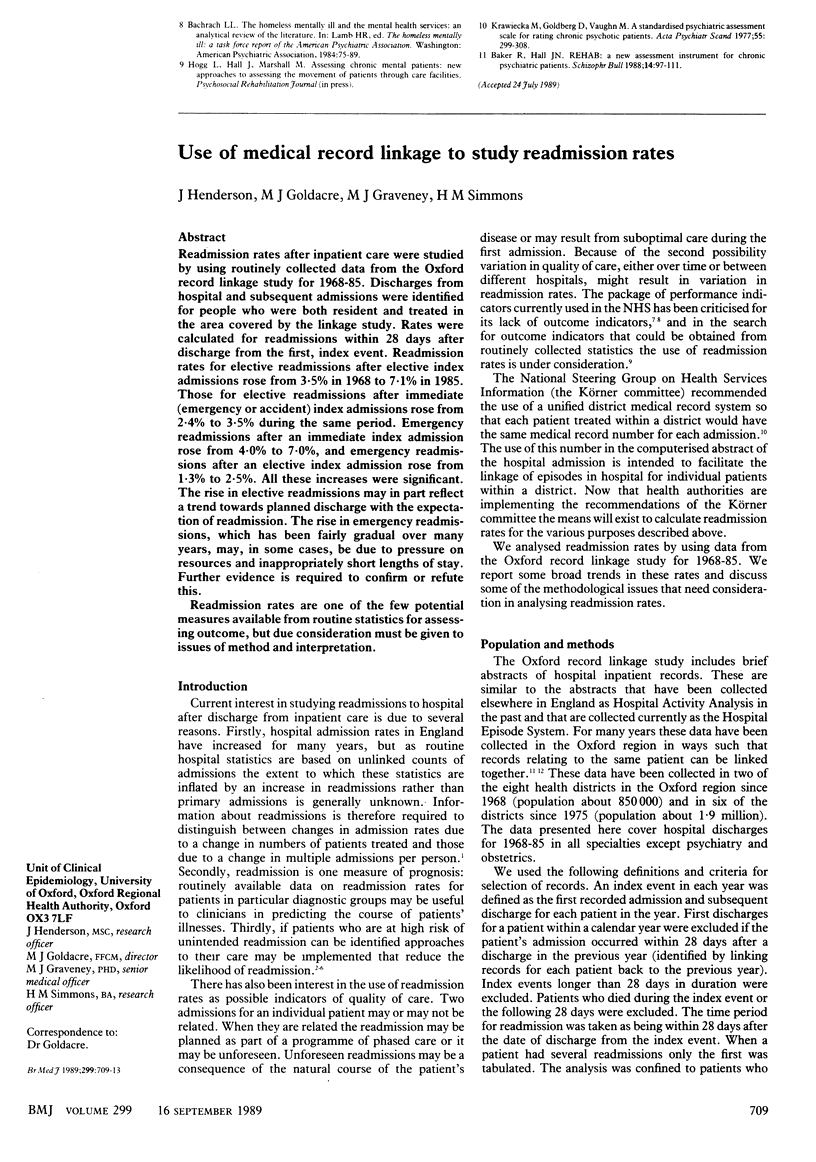
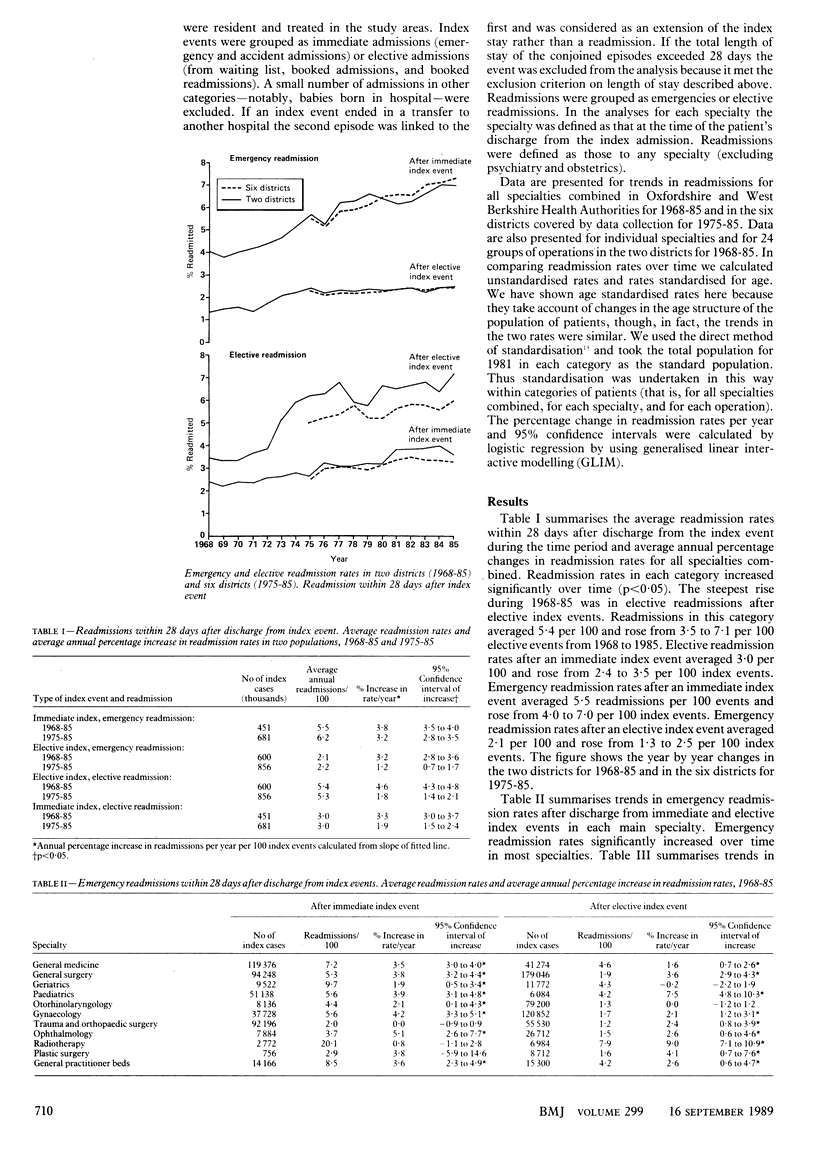
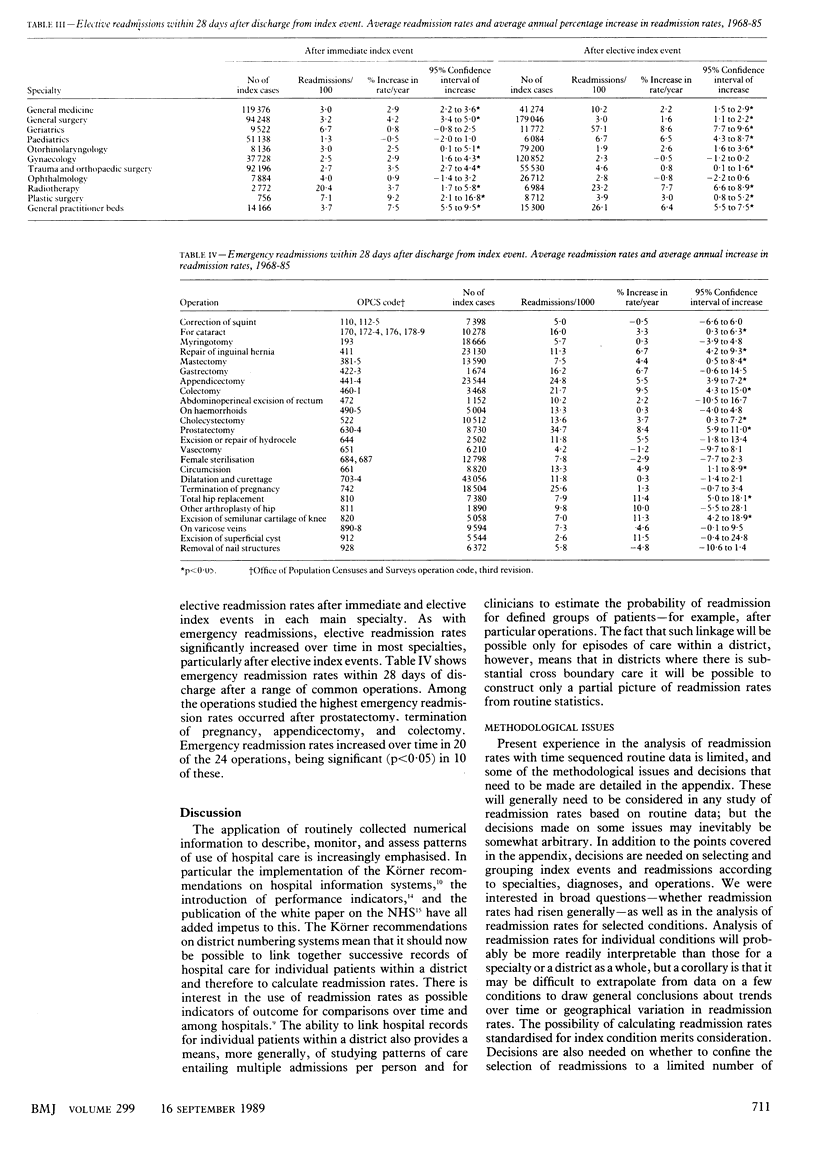
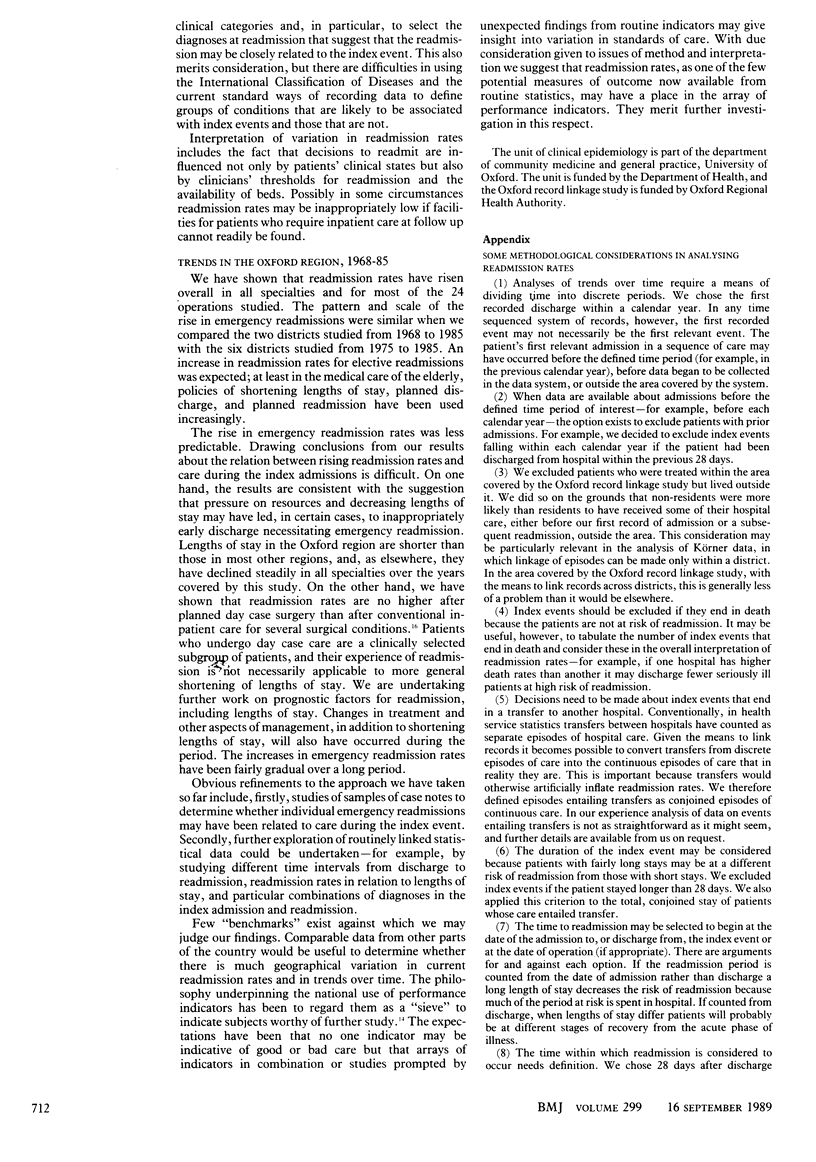
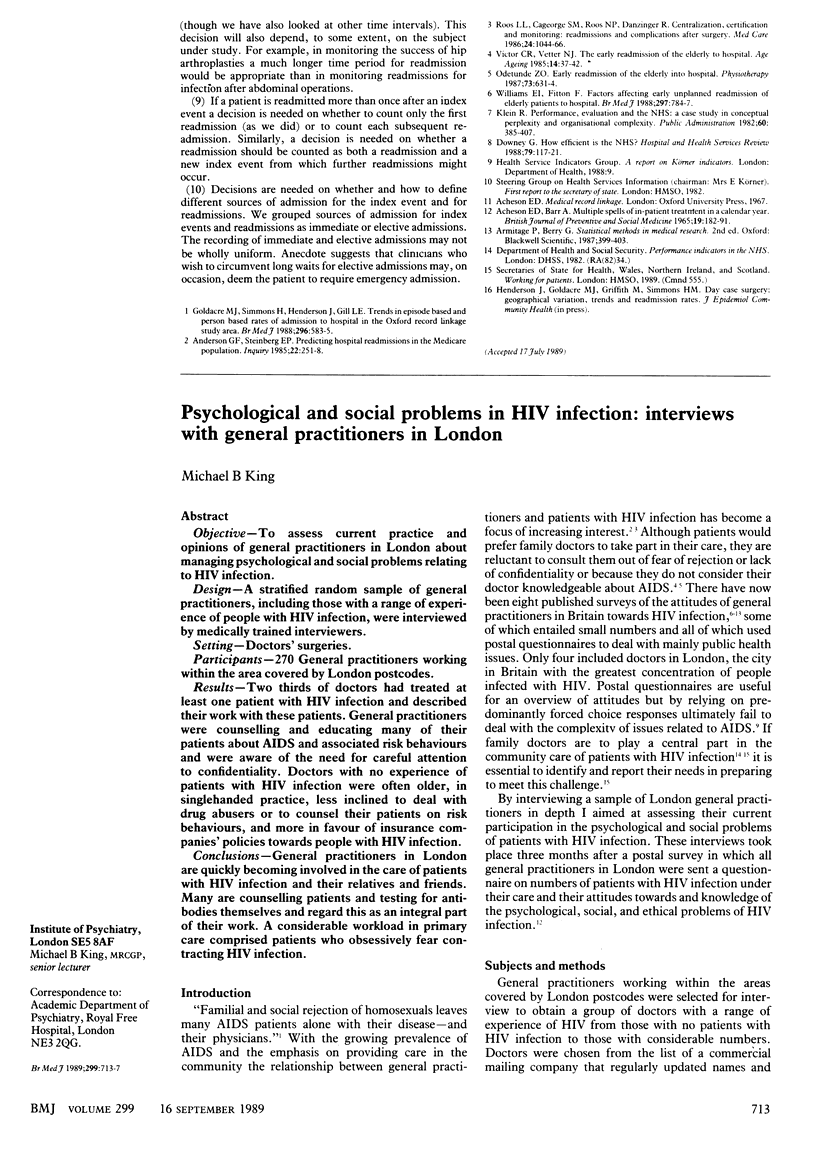
Selected References
These references are in PubMed. This may not be the complete list of references from this article.
- Acheson E. D., Barr A. Multiple spells of in-patient treatment in a calendar year. Br J Prev Soc Med. 1965 Oct;19(4):182–191. doi: 10.1136/jech.19.4.182. [DOI] [PMC free article] [PubMed] [Google Scholar]
- Anderson G. F., Steinberg E. P. Predicting hospital readmissions in the Medicare population. Inquiry. 1985 Fall;22(3):251–258. [PubMed] [Google Scholar]
- Downey G. How efficient is the NHS? Hosp Health Serv Rev. 1983 May;79(3):117–121. [PubMed] [Google Scholar]
- Goldacre M. J., Simmons H., Henderson J., Gill L. E. Trends in episode based and person based rates of admission to hospital in the Oxford record linkage study area. Br Med J (Clin Res Ed) 1988 Feb 20;296(6621):583–585. doi: 10.1136/bmj.296.6621.583. [DOI] [PMC free article] [PubMed] [Google Scholar]
- Roos L. L., Jr, Cageorge S. M., Roos N. P., Danzinger R. Centralization, certification, and monitoring. Readmissions and complications after surgery. Med Care. 1986 Nov;24(11):1044–1066. doi: 10.1097/00005650-198611000-00008. [DOI] [PubMed] [Google Scholar]
- Victor C. R., Vetter N. J. The early readmission of the elderly to hospital. Age Ageing. 1985 Jan;14(1):37–42. doi: 10.1093/ageing/14.1.37. [DOI] [PubMed] [Google Scholar]
- Williams E. I., Fitton F. Factors affecting early unplanned readmission of elderly patients to hospital. BMJ. 1988 Sep 24;297(6651):784–787. doi: 10.1136/bmj.297.6651.784. [DOI] [PMC free article] [PubMed] [Google Scholar]


